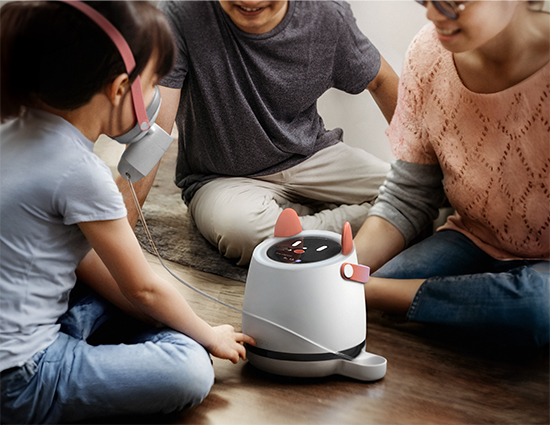Shriya Srinivasan is a biomedical engineer and is an expert in neural interfaces, and Rachel Rakvica is a portfolio strategist at Cambridge Consultants.
Shriya says:
As a principal engineer here at Cambridge Consultants with a strong specialism in neural interfaces, I was excited to head off to the NANS meeting (North American Neuromodulation Society). Immersed as I am in the neural interfacing space, there is nothing quite like getting together with all the movers and shakers in the field to see what is really going on. Here are the crucial points:
1 Data feigns to be the new oil. We must utilize it effectively
First up, there’s a lot of buzz around the idea of big data. We are now able to gather so much more information from patients and share that with clinicians, device manufacturers and patient interest groups. At Cambridge Consultants, we were the first medical device company to succeed in bringing Bluetooth technology into the body in the form of an implant. This allows us to acquire a greater range of data from the body with higher temporal resolution. But data alone is not enough. Device manufacturers need to think carefully about what they do with the data that they will gather in great quantities. AI and machine learning methods may offer some tools for us make headway here.
2 Personalization is the key to the next generation of implants
Personalizing treatment is the ultimate ambition of tomorrow’s medicine but some aspects of user experience remain stubbornly difficult to quantify. There is the very thorny issue of how pain is perceived by individual patients. A more accurate understanding of pain, for example, will require metrics that are objective, multiparametric and timely. If we could nail those three aspects, pain management could become personalized and more effective. There is still a long way to go for industry, but we are excited about the prospects. Here at CC, we continue to make significant advances in developing sensors and platforms for capturing biomarkers to empower a connected-health future. My colleague Joe Corrigan has showcased a vision for the future of insight-driven care for chronic pain.
3 Real-world data can enable patient impact
We hosted a session at the ‘Real-world data and real-world evidence’ workshop, including panellists from Intersystems, Rune Labs, Takeda, and the Veterans Health Administration. This session reiterated that although we have data streaming in from a range of sensors and patient inputs, we need better systems to integrate the data and make sense of it. Algorithms to identify trends and patterns enable new indications for drugs and expand the applications of devices. With a decade of AI and deep learning capabilities that we have developed at Cambridge Consultants, we can further leverage the real-world evidence to find cures for patients using a population-based approach or personalize treatment. These stand to change the game of the clinician experience, patient care, and regulatory frameworks.
Rachel says:
4. Define data collection strategies to answer future questions, not just those of today
When it comes to a data collection strategy, we need to anticipate a good five to 10 years ahead. It’s not going to be enough for manufacturers to only consider questions they seek to answer today. As they define their data collection strategy, they need to consider what are the potential questions we will be asking of smart active implants, and the data they collect, in the future.
The brain/computer interface is a frontier that is looking increasingly exciting. My prediction is that we will be looking for brain implants that routinely allow a paralyzed patient to text with ease, monitor ‘brain health’, and expect to see that some patients will be having multiple neuromodulation implants. As one example, a patient may need one implant for the vagus nerve to treat Parkinson’s and another for the spinal cord to treat chronic pain. For such devices to have longevity, we need to think ahead and anticipate a future in which patients are implanted and using multiple devices.
5. Consumer choice is increasingly paramount
When people can check their exercise stats with a Fitbit and log their health data via an Apple watch, it is little wonder that they have similar expectations for an active implant. The patient experience of interacting with their active implant is increasingly important to the success of the technology. The hunt is on today for an experience that is as elegant and easy for patients to use as, say, a Fitbit. At CC, we have a very strong user experience (UX) and human factors department. We understand how important it is to focus on patient experience of using a device, from the very beginning of the design process. For example, we recently unveiled a smart active implant concept focused on needs of Parkinson’s patients.
6. Bear the business model in mind
With the medical implant sector experiencing such dramatic growth potential, the business case for developing a product needs to be front and center of our minds. We are moving into an era of implants which are more attuned to the individual patient than ever before. That means we need to please and delight patients. ‘One size fits all’ is simply not going to be good enough. For example, a recent study found that patient dissatisfaction with a certain implant was greatly dependent on how often it needed to be charged. What could seem like potentially a minor detail to the developer is clearly a big deal for the patients, whose satisfaction (and possibly even compliance) with the implant plummeted when required to charge it 10 or 12 times a month. Reducing charge frequency to four or five times a month led to increased satisfaction levels.
The issue of remuneration will be in greater focus, especially in a future of a value-based model where the manufacturer is reimbursed, say, based on outcomes and if their device works or not. If patients do not like a device, the chances of them tolerating it are increasingly unlikely. They will become empowered to shop around and voice their opinions in community forums adding pressure to device manufacturers to up their game. I am convinced this is the key to success in tomorrow’s medical device arena and look forward to working with clients on achieving just that.
Here at Cambridge Consultants, we are used to working in depth in this area and we look forward to exciting projects in the months and years to come. Please do get in touch if you would like to discuss any of these topics shaping the future of smart active implants.






